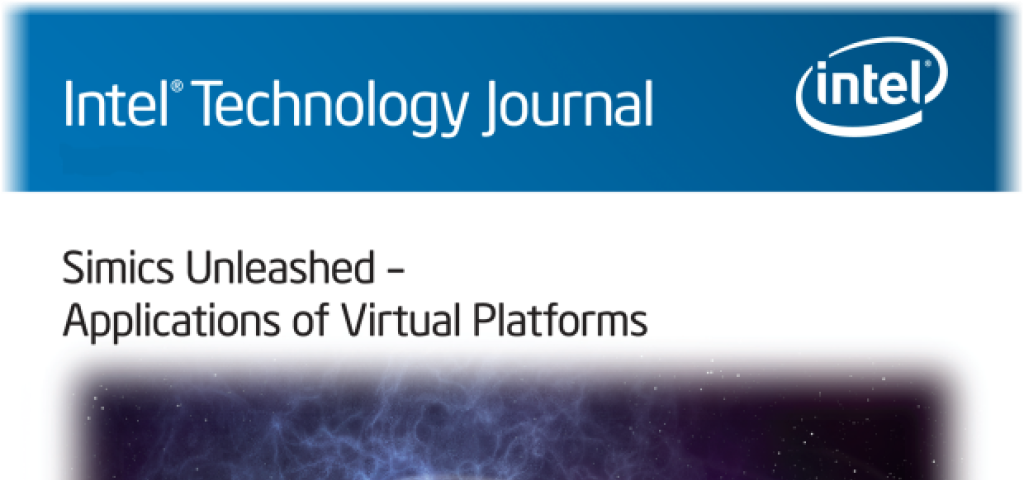
Simics Unleashed - Applications of Virtual Platforms


“Simics Unleashed – Applications of Virtual Platforms” is the title of the latest issue of the Intel Technology Journal (ITJ). The ITJ issue on Simics is approximately 200 pages long, and contains 11 articles from Wind River, Intel, and academia. It covers a wide range of Simics uses, including such diverse topics as very large cluster simulation, BIOS development and platform bringup, ecosystem enablement, pre-silicon and post-silicon Simics usage, device driver generation, automatic software error detection, and training.
The articles included in the issue have all been written independently by the contributors, and discusses Simics and Simics usage from a number of angles. They are all great reads, and I will not call any favorites. However, I am very happy that we got Peter S Magnusson, the founder of Virtutech and the man that created Simics, to provide us a foreword with some insights into the very early days of Simics. Simics is basically a Master’s Thesis project that grew slightly beyond its initial scope.
The following articles are included in the issue:
- Foreword: Simics—The Early Years, by Peter S Magnusson, the founder of Virtutech.
- Simics Overview, by Daniel Aarno (Intel) and Jakob Engblom (that is me)
- Using Virtual Platforms for BIOS Development and Validation, by Steve Carbonari (Intel)
- Simics–SystemC Integration, by Asad Khan and Chris Wolf (Intel)
- Post-Silicon Impact: Simics Helps the Next Generation of Network Transformation and Migration to a Software-Defined Network (SDN), by Tian Tian (Intel)
- Landslide: A Simics Extension for Dynamic Testing of Kernel Concurrency Errors, by Ben Blum, David Eckhardt, and Garth Gibson (Carnegie Mellon University)
- Early Hardware Register Validation with Simics, by Alexey Veselyi and John Ayers (Intel)
- Software Power and Performance Correlation on Simics, by Parth Malani and Mangesh Tamhankar (Intel)
- Simics on Shared Computing Clusters: The Practical Experience of Integration and Scalability, by Grigory Rechistov (Intel)
- Device Driver Synthesis, by Mona Vij, John Keys, Arun Raghunath, Scott Hahn, Vincent Zimmer (Intel); Leonid Ryzhyk (University of Toronto); and Adam Walker and Alexander Legg (NICTA)
- Using Simics in Education, by Robert Guenzel (Wind River)
- Sim-O/C: An Observable and Controllable Testing Framework for Elusive Faults, by Tingting Yu, Witawas Srisa-An, Gregg Rothermel (University of Nebraska-Lincoln)
If you want to understand more of how Simics is used in the real world, to solve very real problems, this is an excellent source that offers a rare in-depth peek at industrial practice in the use of virtual platforms. Despite the many different application areas, one thing that strikes me across all the applications for Simics described is just how flexible and extensible the basic product is. Basically, all of the users of Simics who contributed to the journal wrote some new models, features, or scripts to tailor Simics for their use cases and increase their efficiency.
Note that the cover dates the journal to “September 2013”, since this issue of the ITJ got the September release slot for 2013. However, the final release was slightly delayed. If you want to reference an article in this journal issue, it should be Intel Technology Journal Volume 17, issue 2, September 2013. September might be optional.
The full text is available as a free download (registration required), and the ITJ can also be purchased in print form via Amazon.
For additional information from Wind River, visit us on Facebook.

